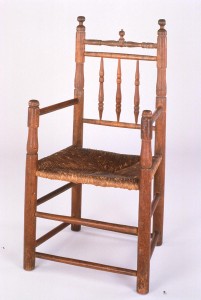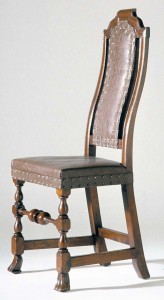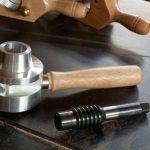We may receive a commission when you use our affiliate links. However, this does not impact our recommendations.
A couple of weeks ago I wrote about the roots of Arts & Crafts furniture and, in the comments, reference was made to “what makes a particular furniture style?” From the first time I took a class trip to Colonial Williamsburg (it was the Bicentennial…everyone went to Williamsburg, right?) I was drawn to period furniture – I didn’t know why but I liked it.
I’ve been studying it so long there’s just lots of aspects of it that are second nature to me. So, when I read comments and questions from people stating they don’t know (or can’t get) a definitive answer as to “what makes a particular furniture style?” I’m taken back to when I was a kid watching Mack Headley and his apprentices working away in the Anthony Hay shop (see the CW reference above, if you’re confused). And, because I remember a time when period furniture was a complete mystery to me, I want to share a little of what I’ve learned since 1976.
There’s a couple of things I’d like to get straight right out of the box. First, there are no hard and fast delineations between periods. Sure, if you choose examples from the beginning (or dead in the middle) of two abutting periods you’ll see the variations easily. But, if you look at examples throughout a single period, you will see how the previous period influenced and grew into the current period and then began evolving into the following one. Styles always transition from one to another.
Second, all styles borrow from other cultures and styles. Don’t be upset by that statement – there is nothing new under the sun. So, when you’re looking at Chippendale furniture be sure to look for the French and Chinese influences. They aren’t hard to spot.
Oh! And one more thing, everything repeats.
One of the easiest forms to see the changes from one style to another is on chairs. So, let’s take a trip in the way-back machine and look at a few chairs, shall we?
From the time the Pilgrims settled at Plimoth Plantation (awesome museum, by the way) in the 1620’s until around 1680 to 1700 furniture was primarily the arena of the joiner and turner. This means lots of mortise and tenon joinery on squarish furniture or lots of spindles (see the first chair in the post).
The furniture didn’t change much in style or construction throughout those years. I like to call this stuff Pilgrim Furniture (though some might use the term Jacobean for part of that timeframe). The chairs are the kind you might find in a 16th or 17th century church – stiff and uncomfortable enough that you couldn’t possibly fall asleep during a service. Notice how the backs of the first two chairs are pretty square in relation to the seat.
As we move through the 17th century, and get closer to the 18th century, furniture started becoming more stylish and comfortable. Chairs began to include a little rake or angle to the back. This may not seem like a dramatic change but its importance will become more apparent as we move along through the periods.
The important things to remember are: squarish; mortise and tenon construction; lots of turned stuff; and not the kind of seating you’d first think of for curling up and reading a good book or watching a movie.
As you transition from the Jacobean furniture (think adding a little ornamentation to that plain, stiff stuff) to William & Mary things become a little more comfortable and a little more stylish. The employment of ornamental carving, caning and fabrics starts to become more widespread.
You’re still getting plenty of turnings and mortise and tenon joinery but the furniture starts getting a little lighter in appearance.
Making the leap from William & Mary to Queen Anne isn’t that tough when you introduce the cyma curve. Another big change from earlier chairs is the shift from the crest rail being tenoned into the rear legs (or stiles) to the stiles being tenoned into the crest (the second chair in the post is an exception).
And, because this post is becoming my personal “War and Peace” (or a more timely “A Song of Fire and Ice”), I’ll jump right into the move from William & Mary through Queen Anne and Chippendale in my next “Design in Practice” post. I’ll wrap it all up and move beyond the third quarter of the 18th century in the post after next, meanwhile, if you have questions about the differences between the styles covered today, I’m happy to answer in the comments. I’ll do my best to be brief.
So, remember chair fans, to join us next time – same chair time, same chair channel.
Here are some supplies and tools we find essential in our everyday work around the shop. We may receive a commission from sales referred by our links; however, we have carefully selected these products for their usefulness and quality.















When does the Windsor chair show up?
Chuck,
Stephen Anthony here, co- owner and master craftsman at A&E Fine Woodworking, Lakewood, CO.
I grew up in a household where my Mum and Grandmum scavenged in second hand stores, flea markets and purchased specific styles of painted furniture which they stripped and refinished. What I didn’t know at the time is that they were collecting “Golden Oak” period, catalog furniture and “Eastlake” Victorian furniture. Majored in art in college, and a whole new world opened up as I focused on furniture design and construction. I read Nutting, Cescinsky, Sloan, Margon, the Osburns. The owner of the first shop I worked at handed me a copy of Israel Sack’s ” Fine Points of Furniture – Early American”… My understanding of the world in which we live as artisans completely changed that day.
Ingrained in our statement of purpose as a business , my partner and I agreed to make continuing education an integral part of what we offer our employees. I have put together power point presentations that discuss socio-political influences on architecture and furniture design during specific periods in history; focused on Britain, Spain,France, Central Europe, Scandiavia and the Americas. The cross-pollination of culture upon culture, including royal houses, and the geo-political climate of the period makes for some lively sessions.
What you say is true. There is no definitive line in periods.
Thanks for sharing!
Speaking of War and Peace, are these posts a precursor to a similarly sized (or larger) volume of “Everything Chuck Knows About Chairs” ?
(Thanks for the Batman and Mr. Peabody references. )